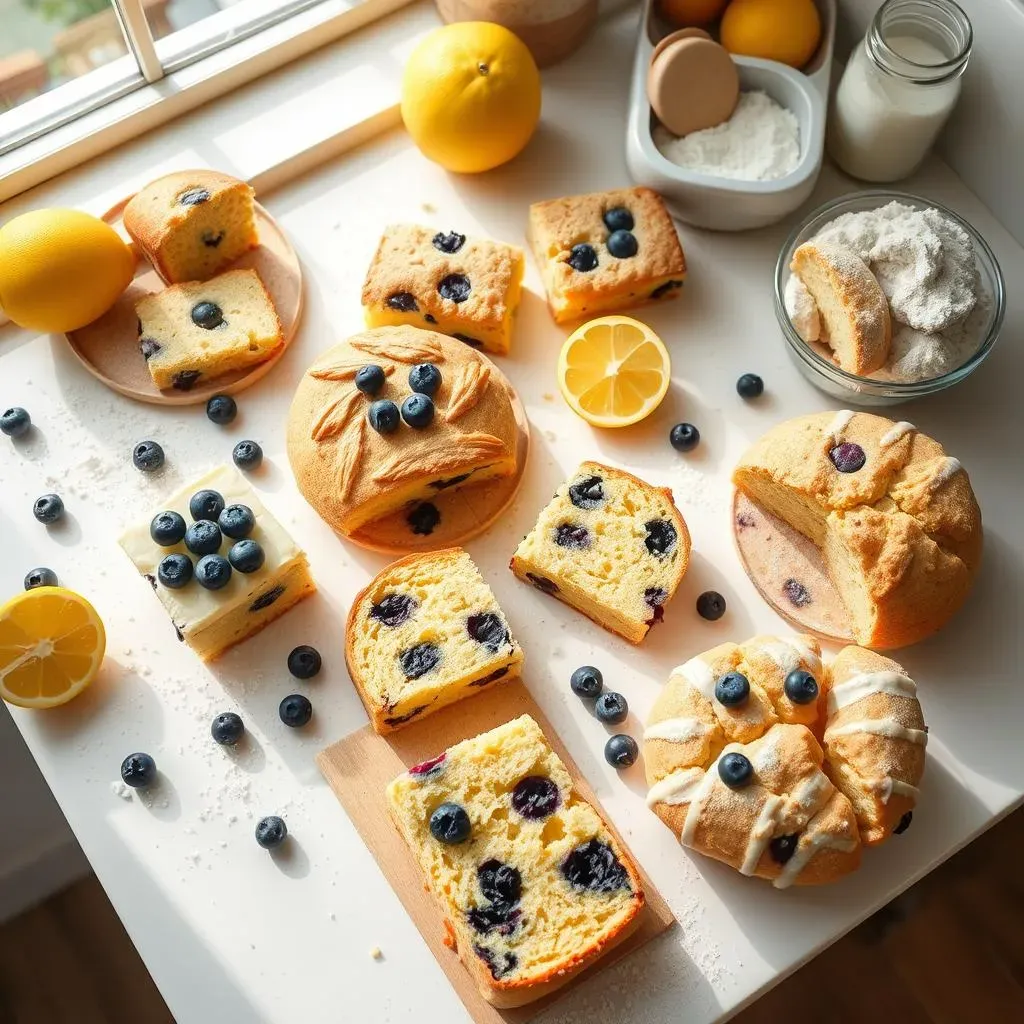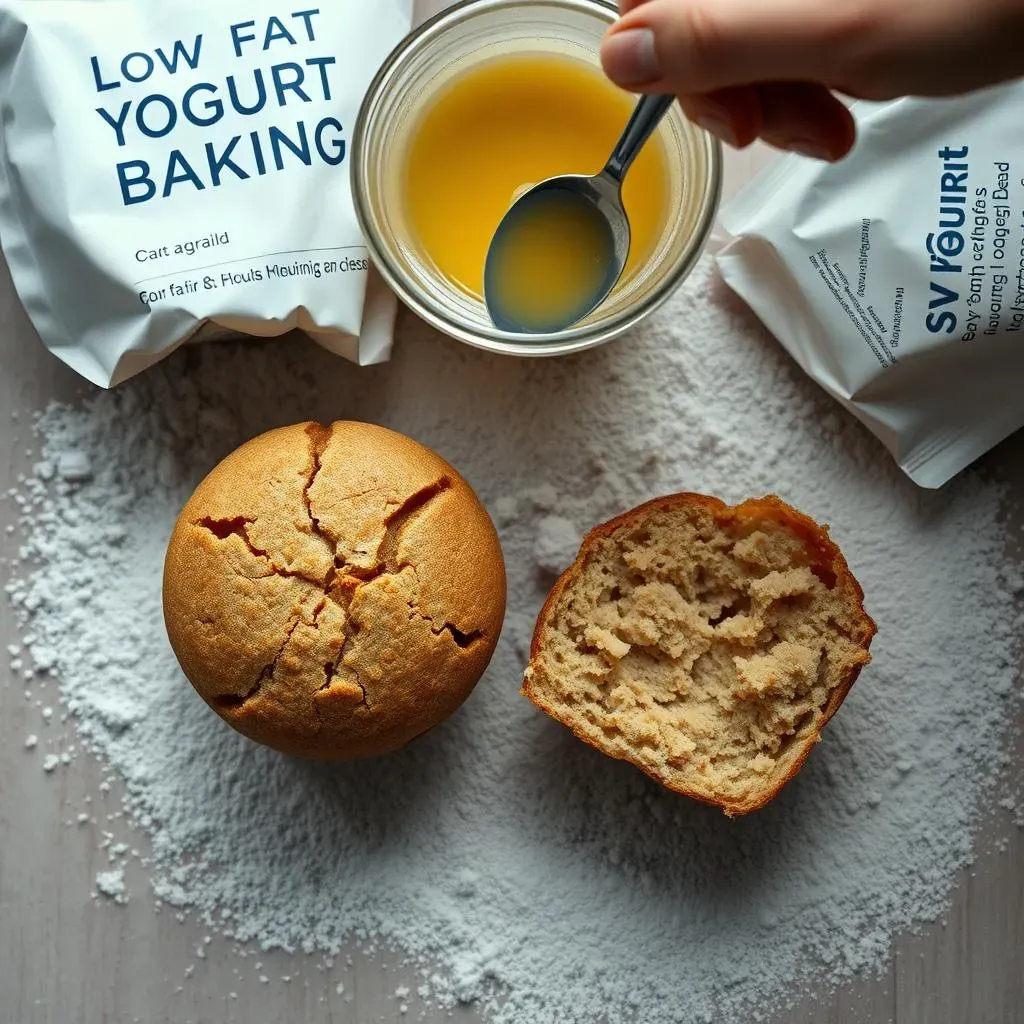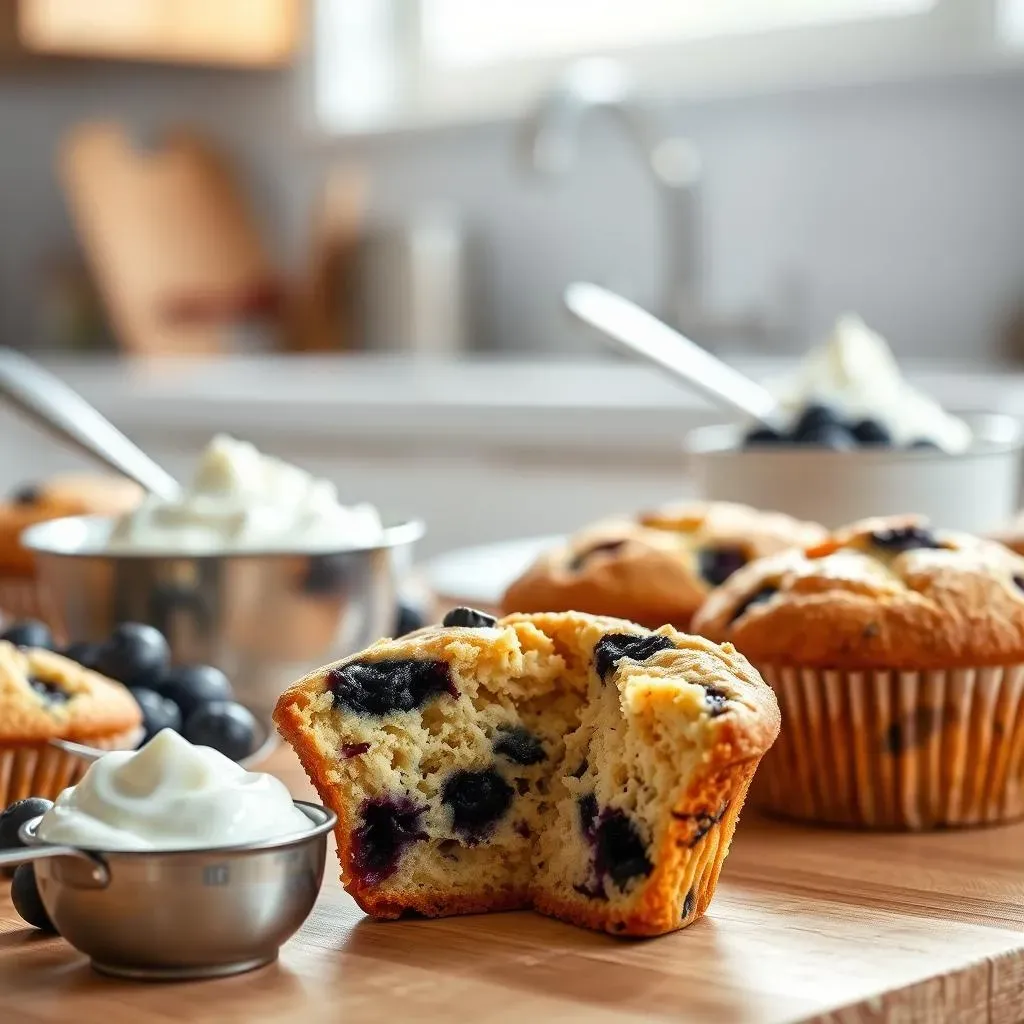Table of Contents
Craving a guilt-free treat? Want to sneak some extra nutrients into your baked goods? Then you've come to the right place! This article dives deep into the wonderful world of baking with low fat yogurt. We're not just talking about swapping ingredients; we're exploring how low fat yogurt can transform your cakes, muffins, and more into healthier, tastier delights. Forget dry, bland diet food – prepare for moist, flavorful creations that will satisfy your sweet tooth without derailing your wellness goals.
Why Bake with Low Fat Yogurt? Health & Flavor Benefits

Why Bake with Low Fat Yogurt? Health & Flavor Benefits
let's get real about why you should even bother baking with low fat yogurt. It's not just some trendy health kick; there are legit reasons why it's a game-changer. First off, it's a fantastic way to slash the fat content in your recipes without sacrificing moisture. Think about it: cakes and muffins often rely on butter or oil for that tender crumb, but yogurt steps in as a lighter alternative. This means you can enjoy your favorite treats more often without the guilt. But wait, there's more!
Beyond the reduced fat, low fat yogurt brings a nutritional boost to the table. It's packed with protein, which helps keep you feeling full and satisfied, and calcium, which is essential for strong bones. Plus, the tangy flavor of yogurt adds a unique twist to your baked goods, enhancing their overall taste profile. It's like a secret ingredient that elevates everything it touches. So, whether you're looking to lighten up your diet or simply experiment with new flavors, baking with low fat yogurt is a win-win situation.
- Lower Fat: Enjoy treats with less guilt.
- Added Protein: Stay full and satisfied.
- Calcium Boost: Strengthen your bones.
- Tangy Flavor: Enhances taste.
Low Fat Yogurt Baking Basics: Tips & Tricks for Success

Low Fat Yogurt Baking Basics: Tips & Tricks for Success
Alright, so you're ready to dive into low fat yogurt baking? Awesome! But before you start tossing ingredients together, let's cover some ground rules. First, not all yogurts are created equal. Opt for plain, unsweetened low fat yogurt for the best results. Flavored yogurts often contain added sugars and artificial ingredients that can mess with your recipe's flavor and texture. Greek yogurt is another option, but keep in mind it's thicker and may result in a denser final product. You might need to adjust the liquid in your recipe accordingly.
Another key tip? Don't overmix the batter! Overmixing develops the gluten in the flour, leading to a tough, chewy texture. Instead, gently fold the wet and dry ingredients together until just combined. A few streaks of flour are okay – they'll disappear during baking. Also, keep an eye on the baking time. Low fat yogurt can sometimes cause baked goods to brown more quickly, so start checking for doneness a few minutes earlier than the recipe suggests. A toothpick inserted into the center should come out clean or with a few moist crumbs attached.
Finally, remember that baking with low fat yogurt is all about experimentation. Don't be afraid to tweak recipes to suit your taste and preferences. Add a splash of vanilla extract, a sprinkle of cinnamon, or a handful of chocolate chips to create your signature creations. The possibilities are endless!
Tip | Description |
|---|---|
Yogurt Choice | Use plain, unsweetened low fat yogurt. |
Mixing | Don't overmix the batter. |
Baking Time | Check for doneness early. |
Experimentation | Don't be afraid to tweak recipes. |
Low Fat Yogurt Recipes: Cakes, Muffins & More

Low Fat Yogurt Recipes: Cakes, Muffins & More
let's get to the fun part: the recipes! Low fat yogurt recipes are surprisingly versatile. You can whip up everything from light and fluffy cakes to moist and satisfying muffins. For a simple yet impressive cake, try a lemon yogurt cake. The yogurt adds a subtle tang that complements the bright citrus flavor perfectly. Or, if you're in the mood for something a bit more decadent, a chocolate yogurt cake is always a winner. The yogurt keeps the cake incredibly moist, even with the addition of cocoa powder.
Muffins are another fantastic option for low fat yogurt recipes. Blueberry yogurt muffins are a classic for a reason – the juicy blueberries and tangy yogurt create a delightful flavor combination. For a healthier twist, try adding some whole wheat flour or oats to the batter. You can also experiment with different fruits, such as raspberries, strawberries, or bananas. The key is to find a balance between the wet and dry ingredients to achieve the perfect muffin texture. Remember, slightly underbaked muffins are always better than overbaked ones!
Want to try something totally different? How about yogurt scones? They're a perfect afternoon treat with a cup of tea. Or, if you're feeling adventurous, try making yogurt pancakes. They're lighter and fluffier than traditional pancakes, and the yogurt adds a subtle tang that's simply irresistible. No matter what you choose to bake, low fat yogurt recipes are a great way to enjoy your favorite treats without the guilt. So, get creative and have fun in the kitchen!
Recipe Type | Example | Flavor Profile |
|---|---|---|
Cake | Lemon Yogurt Cake | Tangy & Bright |
Muffins | Blueberry Yogurt Muffins | Fruity & Classic |
Other | Yogurt Scones | Perfect with Tea |
Troubleshooting Your Low Fat Yogurt Baking: Common Issues & Solutions

Troubleshooting Your Low Fat Yogurt Baking: Common Issues & Solutions
Why is My Baked Good Dry?
Ever bite into a cake or muffin made with low fat yogurt and find it drier than the Sahara? It's a common problem, but easily fixable. The most likely culprit is overbaking. Low fat yogurt has less fat than traditional baking ingredients, so it can dry out more quickly in the oven. Start checking for doneness a few minutes before the recipe suggests. Another potential issue is using too much flour. Flour absorbs moisture, so measure it carefully. Spoon the flour into your measuring cup instead of scooping it directly from the bag to avoid packing it in.
Also, consider the type of yogurt you're using. Greek yogurt, while a great source of protein, is thicker than regular yogurt and can sometimes lead to drier results. If you're using Greek yogurt, try adding a tablespoon or two of extra liquid (milk, water, or even a little bit of lemon juice) to the batter to compensate. Finally, make sure you're storing your baked goods properly. Wrap them tightly in plastic wrap or store them in an airtight container to prevent them from drying out.
Problem | Possible Solution |
|---|---|
Dry Baked Good | Reduce baking time, measure flour carefully, add extra liquid if using Greek yogurt, store properly. |
My Baked Goods are Too Dense!
Dense, heavy baked goods can be a real disappointment. One common reason is overmixing the batter. As we discussed earlier, overmixing develops the gluten in the flour, resulting in a tough, dense texture. Be gentle when combining the wet and dry ingredients, and stop mixing as soon as everything is just combined. Another potential cause is using cold ingredients. Cold ingredients don't emulsify as well, which can lead to a dense final product. Make sure your yogurt, eggs, and any other liquid ingredients are at room temperature before you start baking.
Also, check your leavening agents (baking powder and baking soda). Are they fresh? Expired leavening agents won't provide enough lift, resulting in a dense baked good. To test their freshness, add a teaspoon of baking powder to a cup of hot water. If it fizzes vigorously, it's still good. For baking soda, mix a teaspoon with a tablespoon of vinegar. Again, it should fizz. If your leavening agents are old, replace them before baking.
Why is My Cake/Muffin Soggy?
A soggy bottom (or top!) is never a good thing when it comes to baking. The most common culprit here is underbaking. If your baked good is still wet in the center, it needs more time in the oven. Use a toothpick to check for doneness. If it comes out with wet batter clinging to it, continue baking for a few more minutes and check again. Another possibility is that you added too much liquid to the batter. Double-check the recipe and make sure you measured the ingredients accurately. Remember, even a small amount of extra liquid can throw off the balance of the recipe.
Also, consider the humidity in your kitchen. On humid days, baked goods can take longer to bake and may be more prone to sogginess. If you live in a humid climate, try reducing the amount of liquid in the recipe slightly. Finally, make sure you're cooling your baked goods properly. Let them cool in the pan for a few minutes before transferring them to a wire rack to cool completely. This will prevent them from becoming soggy from trapped moisture.
- Underbaking: Bake longer, check with a toothpick.
- Too much liquid: Double-check measurements.
- Humidity: Reduce liquid slightly.
- Improper cooling: Cool in pan, then on a rack.
Conclusion: Embrace the Delicious Possibilities of Baking with Low Fat Yogurt
So, there you have it! Baking with low fat yogurt is not only possible, but it's also a fantastic way to enjoy your favorite treats while making healthier choices. From adding moisture and tang to reducing fat and calories, low fat yogurt is a true baking superhero. With the tips, tricks, and recipes shared in this article, you're well-equipped to experiment and create your own delicious masterpieces. Don't be afraid to get creative with flavors and ingredients – the possibilities are endless! Now, go forth and bake something amazing (and good for you!).
